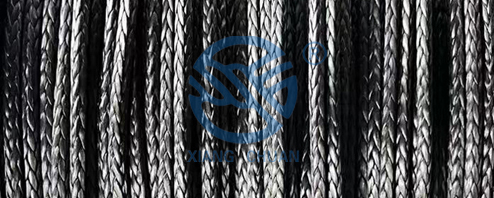私たちは業界です

In the world of maritime operations, mooring tails play a critical role in ensuring the safety and stability of vessels when they are docked at ports or terminals. These vital components are essential for securing a vessel to a berth and preventing it from drifting or being damaged by strong winds or currents. In this article, we will decode the mechanics of mooring tails and explore their importance in the maritime industry.
Mooring tails are essentially large ropes or lines that are attached to a vessel and secured to a fixed point on land, such as a bollard or cleat. These ropes play a crucial role in distributing the weight and forces generated by a vessel's movement, such as when the tide changes or when the wind creates a strong lateral force. By anchoring the vessel securely to the berth, mooring tails help to prevent it from drifting or colliding with other vessels or structures in the harbor.
One of the key factors that determine the effectiveness of mooring tails is their material and construction. Mooring lines are typically made of high-strength synthetic fibers, such as nylon, polyester, or aramid, that are resistant to abrasion, UV exposure, and harsh marine environments. These materials are chosen for their superior tensile strength and elasticity, which allows them to absorb and dissipate the energy generated by a vessel's movements without breaking or stretching too much.
The length and diameter of mooring lines are also important considerations when designing a mooring system. The length of a mooring tail should be sufficient to allow for the vessel's movement with the changing tide, while also providing enough slack to accommodate any fluctuations in water levels or currents. The diameter of the mooring lines should be carefully chosen to match the weight and size of the vessel, as well as the expected forces that will be exerted on them during mooring operations.
In addition to their material and construction, the arrangement and configuration of mooring tails also play a critical role in their effectiveness. Mooring lines are typically arranged in a specific pattern, such as a single or double line configuration, to provide maximum stability and security for the vessel. The lines are also secured to the vessel and the shore using appropriate hardware, such as shackles, thimbles, and hooks, to ensure a strong and reliable connection that can withstand the forces exerted during mooring.
Proper maintenance and inspection of mooring tails are also essential to ensure their reliability and effectiveness. Mooring lines should be regularly inspected for signs of wear and tear, such as fraying, abrasion, or UV damage, and replaced as needed to prevent unexpected failures during mooring operations. Regular cleaning and lubrication of mooring lines are also important to prolong their service life and ensure optimal performance.
In conclusion, mooring tails are essential components of a vessel's mooring system that play a critical role in ensuring the safety and stability of vessels when they are docked at ports or terminals. By understanding the mechanics of mooring tails and implementing proper design, construction, and maintenance practices, maritime operators can ensure the effectiveness and reliability of their mooring systems, protecting vessels and crew from the risks associated with docking and mooring operations.
住所:
中国江蘇省宝営県城南工業園区城南路8号
Eメール:
E-mail1:vanzer@xcrope.com Vanzer Tao
E-mail2:sales@xcrope.com Wang Peng
E-mail3:grace@xcrope.com Grace Li
E-mail4:info@xcrope.com David Cheng
会社電話:
+86-514-88253368
海外営業部:
+86-514-88302931



著作権 © Jiangsu Xiangchuan Rope Technology Co., Ltd. |無断転載を禁じます